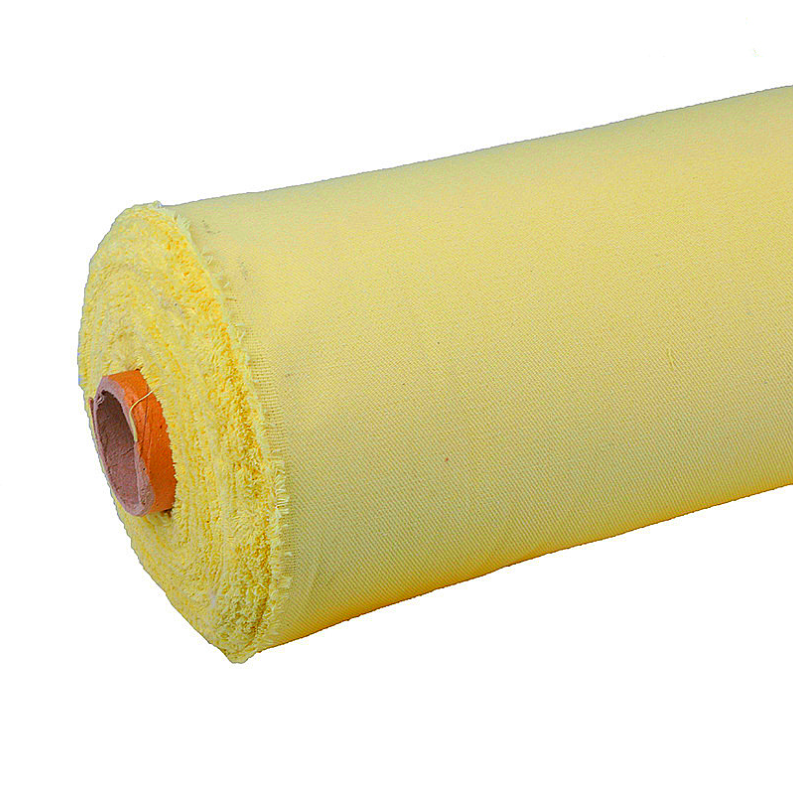Aramid flame-retardant fabric is used for fire blankets and cut-resistant gloves
Jul 09,2025

Characteristics of Aramid Flame-Retardant Fabric
① High Strength and Modulus:
This is one of the most prominent characteristics. The strength of aramid fiber is more than 5 times that of steel wire of the same weight, and the modulus (resistance to deformation) is also very high. The woven fabric form provides good in-plane strength and dimensional stability.
② Excellent Heat Resistance and Thermal Stability:
It has a high glass transition temperature and decomposition temperature (usually above 400°C). It does not melt at high temperatures (only carbonizes), has good flame retardancy (high limiting oxygen index). It can maintain its structure and strength for a short time when exposed to high temperatures.
③ Excellent Flame Retardancy:
It has inherent flame-retardant properties, does not burn or slowly carbonizes when exposed to fire, and self-extinguishes when removed from fire. It releases less smoke and toxic gases during combustion.
④ Good Chemical Stability:
Resistant to most organic solvents, oils, and fuels. Resistant to weak acids and weak alkalis, but performance will decrease under the action of strong acids, strong alkalis, or certain strong oxidants. Good hydrolysis resistance.
⑤ Low Density/Lightweight:
The density is about 40% lower than that of glass fiber and about 80% lower than that of steel wire, providing a high strength-to-weight ratio.
⑥ Excellent Cut and Abrasion Resistance:
High-modulus para-aramid has very good cut and abrasion resistance.
⑦ Good Dimensional Stability:
Low thermal shrinkage, low creep, and not easily deformed under stress or temperature changes.
⑧ Good Electrical Insulation:
It is a good electrical insulator under dry conditions.
⑨ Fatigue Resistance: It can maintain good performance under repeated stress. [The above data comes from the internet and the laboratory]
Applications of Aramid 1414 Woven Fabric
1. Personal Protective Equipment:
① Bulletproof vests, bulletproof helmets: Utilizing its high strength and toughness to absorb the kinetic energy of bullets or fragments, it is the core material of soft bulletproof vests (usually multiple layers of woven fabric are laminated).
② Anti-stab vests, anti-cut gloves: Utilizing its excellent cut and puncture resistance.
③ Firefighting suits, high-temperature protective clothing: Utilizing its excellent flame retardancy, heat resistance, and heat insulation.
④ Arc protective clothing: Utilizing its flame retardancy and electrical insulation.
2. Aerospace:
Lightweight composite material reinforcement for fuselage, wings, fairings, and cabin wall panels (usually composite with resin).
Engine compartment insulation layer, fireproof partition.
Luggage racks, seat structures.
3. Defense and National Defense:
Reinforcement layer of composite armor plates for armored vehicles (tanks, armored personnel carriers), used to defend against bullets and shell fragments.
Ship armor, explosion-proof structures.
Parachute cords, special ropes.
4. Industrial Fields:
① High-temperature filtration: Used in high-temperature flue gas dust removal bags for cement, metallurgy, and coal-fired power plants (mainly meta-aramid), resistant to high temperatures and chemical corrosion.
② Friction sealing materials: Reinforcement base material for clutch plates, brake pads, gaskets, and seals, providing high strength and heat resistance.
③ Rubber reinforcement: Skeleton material for conveyor belts, automotive rubber hoses (such as air conditioning pipes, turbocharger pipes), and tire cords (some high-performance tires), providing high strength and dimensional stability.
④ Protective curtains: Welding protective curtains, molten metal splash protective curtains.
5. Transportation:
Composite material reinforcement for lightweight automotive components (such as body panels, chassis parts).
High-performance racing car parts.
Ship structures, racing boats.
6. Sports and Leisure Goods:
High-performance sports equipment: such as racing boats, kayaks, bicycle frames, golf clubs, tennis rackets, and snowboards, as lightweight and high-strength composite material reinforcement.
Protective equipment: such as motorcycle suits, mountaineering ropes (outer sheath).
7. Electronics and Electrical Engineering:
High-temperature resistant insulating paper, sleeves, and laminates.
Insulating materials in transformers and motors.
Para-aramid (PPTA - such as Kevlar, Twaron) is known for its high strength and high modulus; meta-aramid (MPIA - such as Nomex, Conex) is known for its excellent flame retardancy, heat resistance, and insulation. Choose according to application needs.
Fabric Structure: Plain weave, twill weave, satin weave, etc., affect the softness, drape, and mechanical property anisotropy of the fabric.
Yarn Specifications and Density: Yarn fineness (denier/tex) and warp and weft density directly affect the weight, thickness, strength, and air permeability of the fabric.
Related Posts
Contact Us
E-mail:
gdkaidun@163.com
Phone/WeChat:
86-131-3828-6677
Address:
Room 401, Building 21, No. 1, Keqing Road, Yundonghai Street, Sanshui District, Foshan City, Guangdong Province





